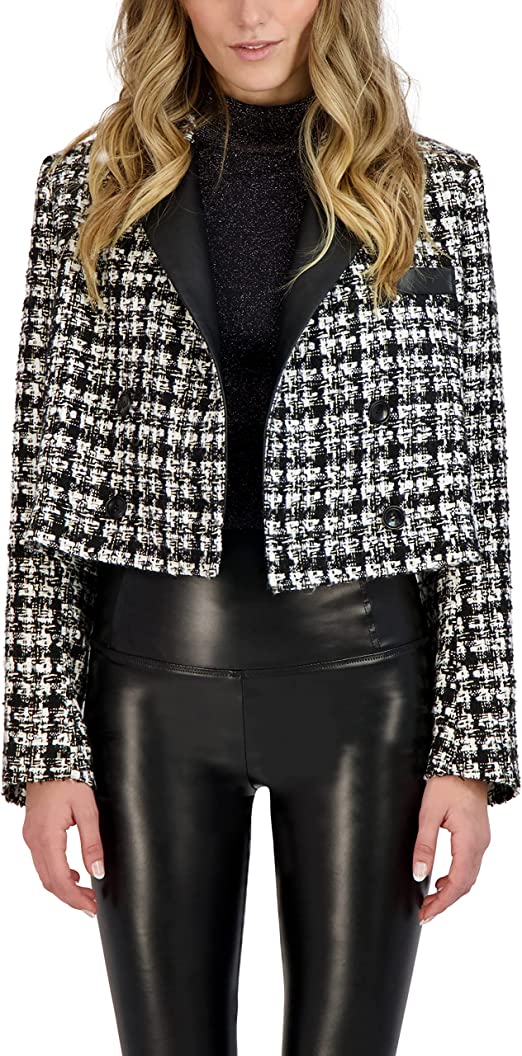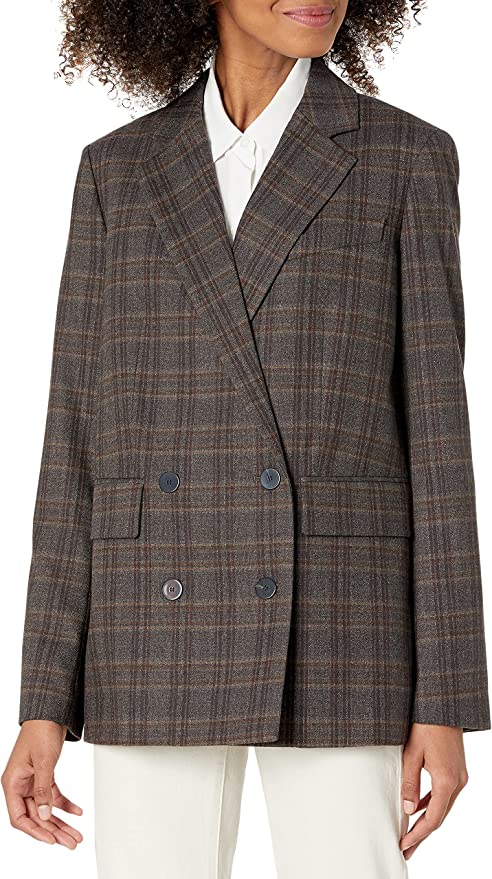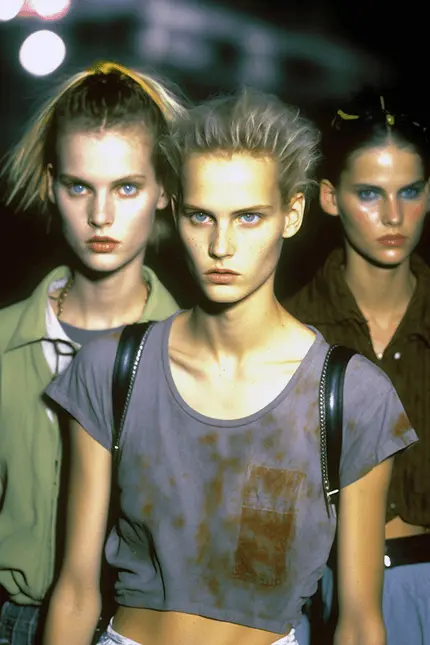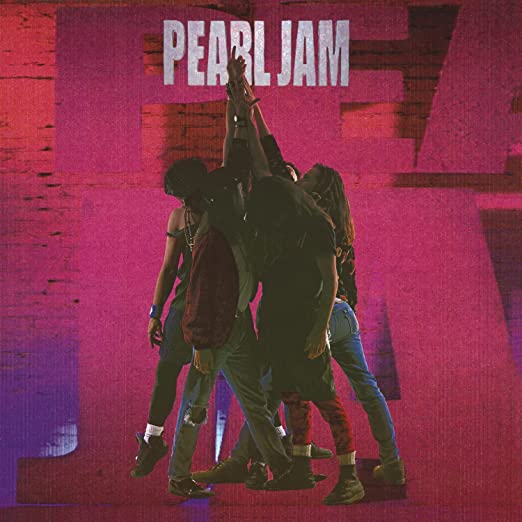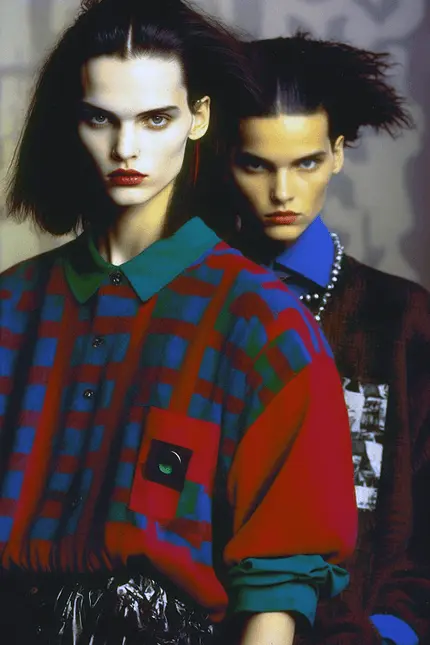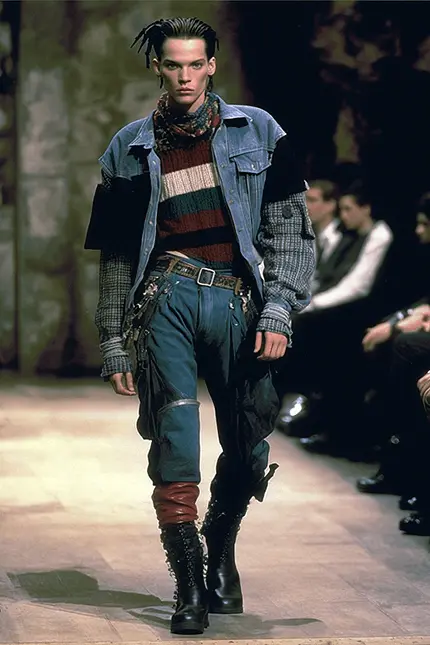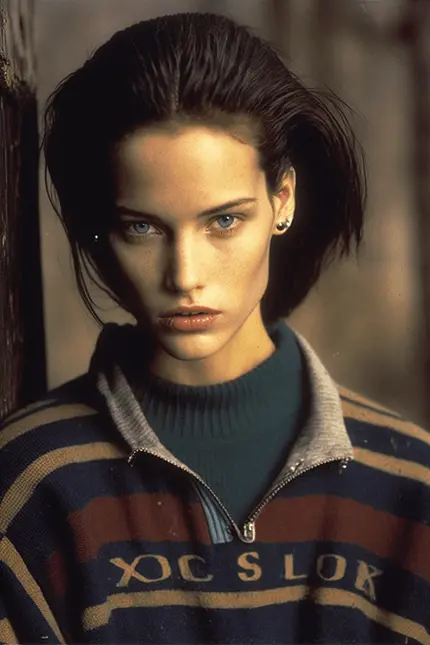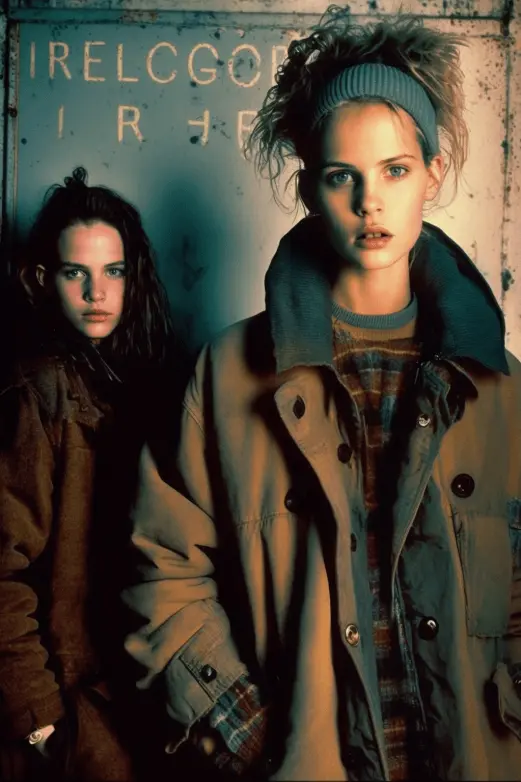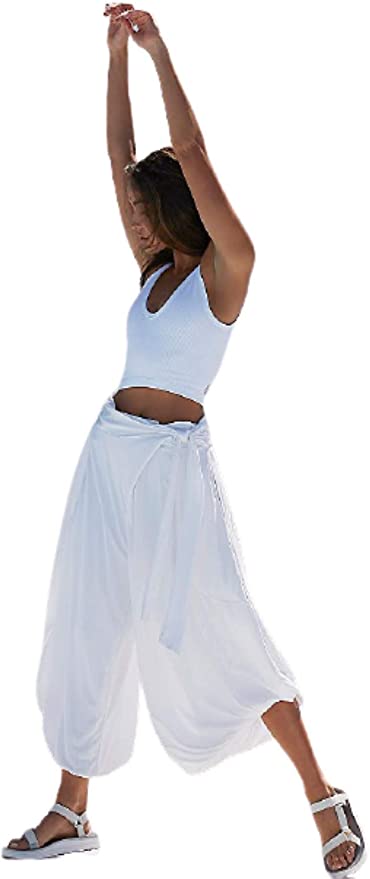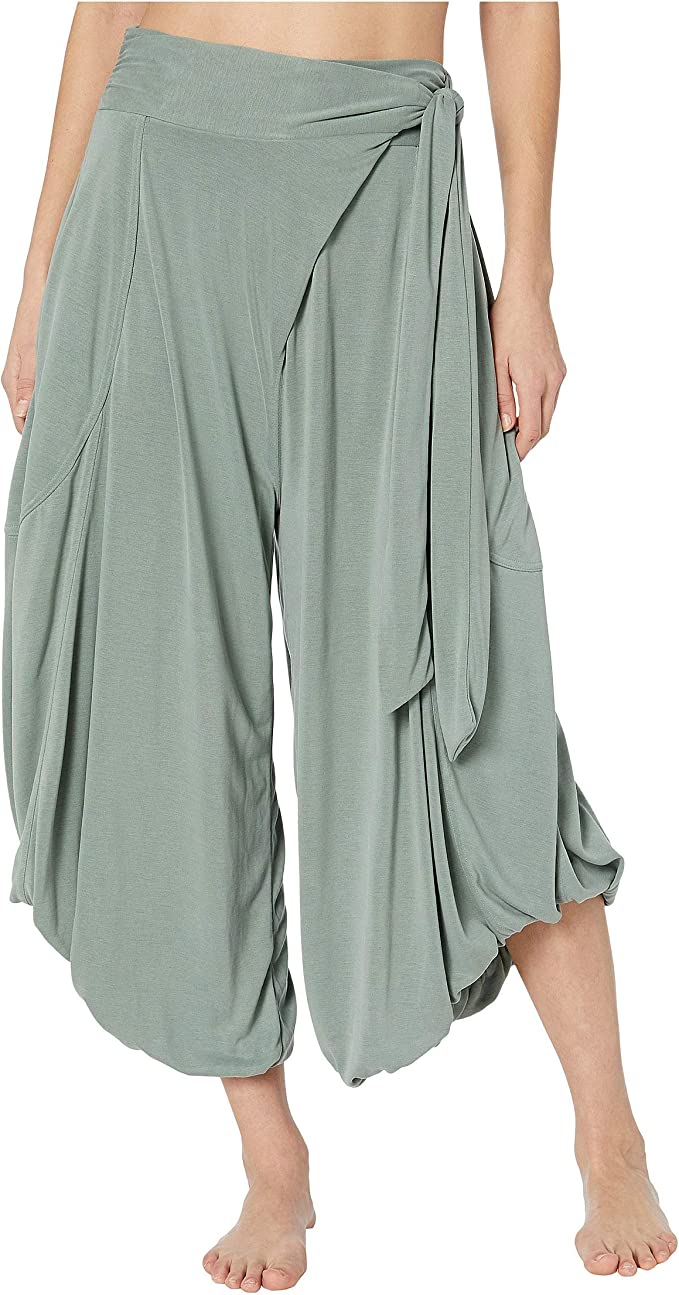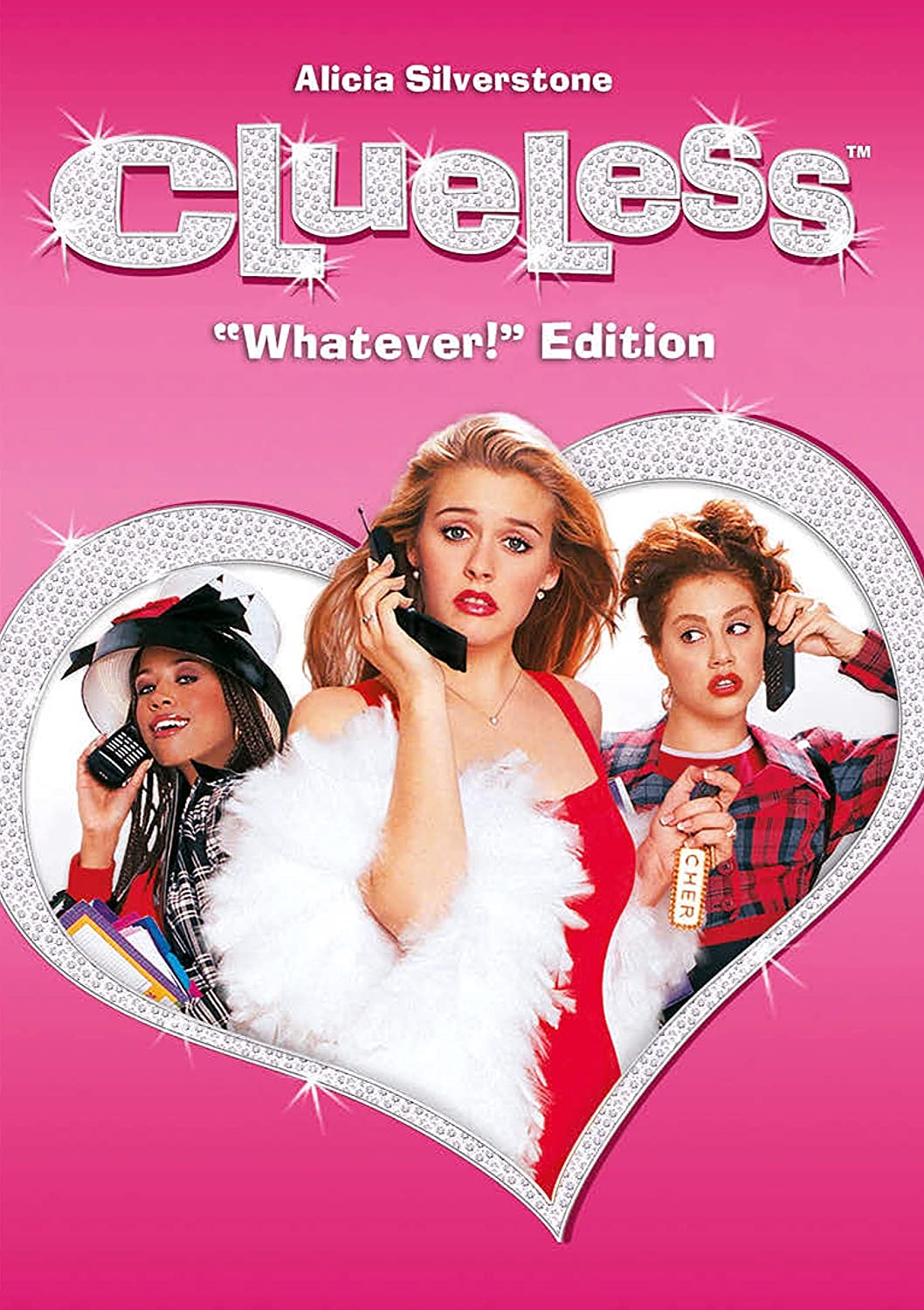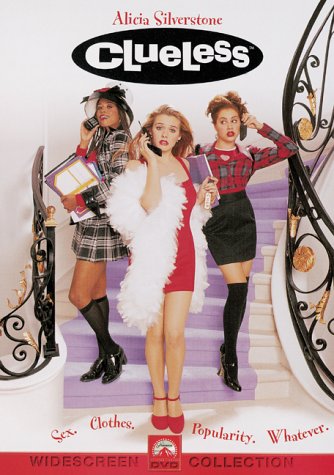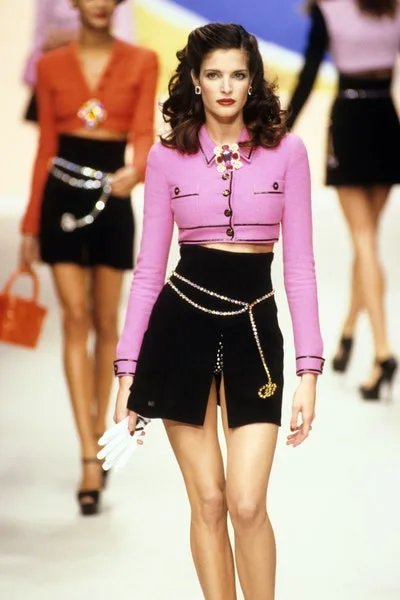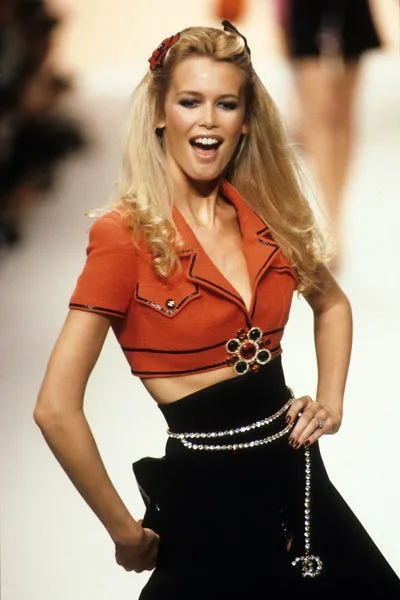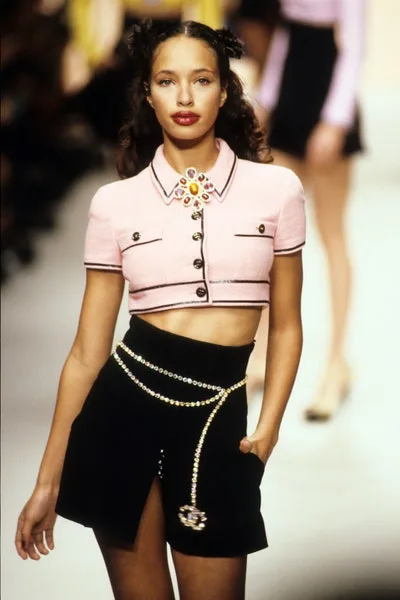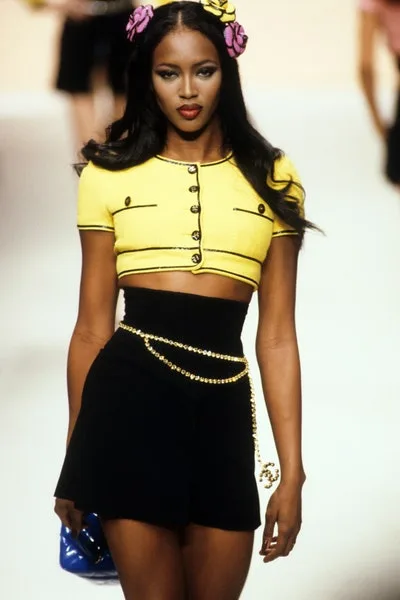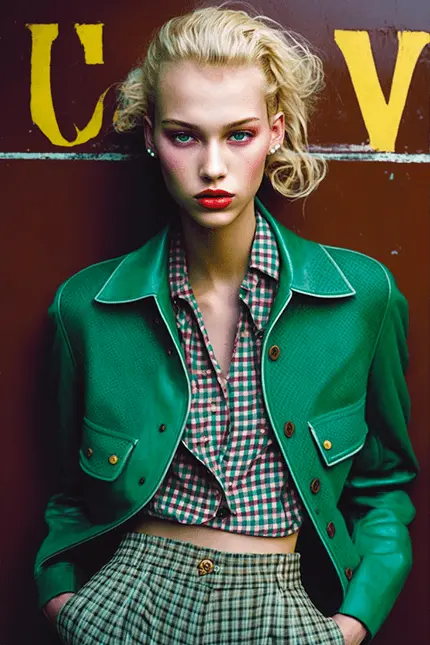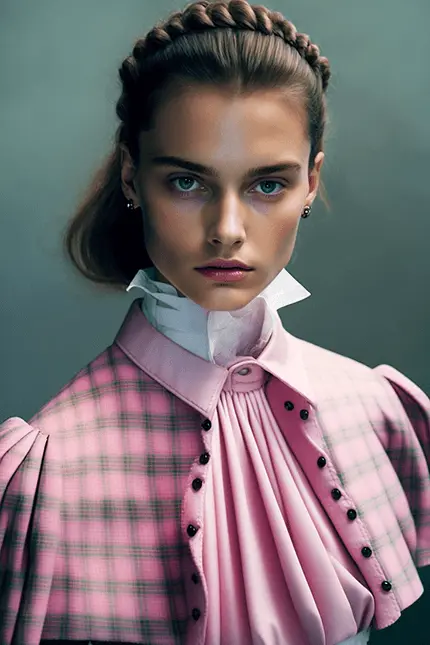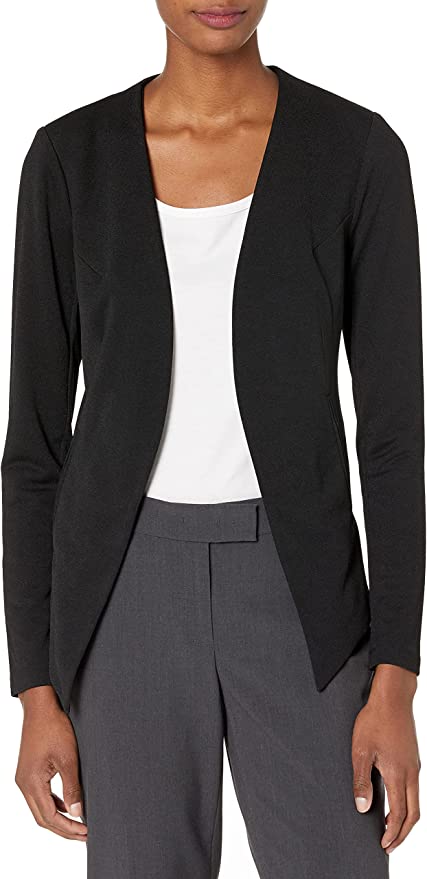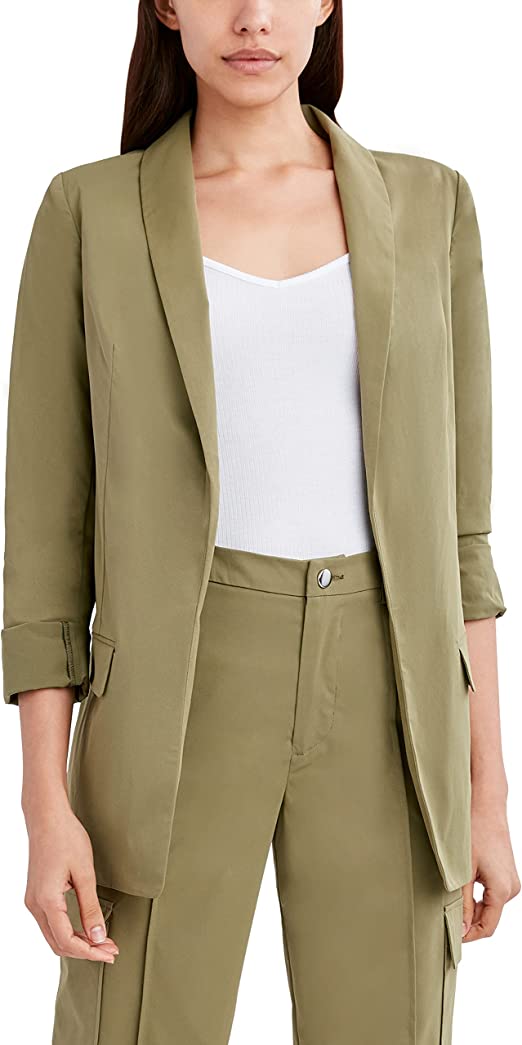90s FASHION
- March 19, 2023
- Dagmara Mach
90s Fashion was a daring decade that saw everything from power dressing and prep to grunge, streetwear, and Y2K.
The keys to 90s fashion are individuality, girl power, fun layers, and bold statements.
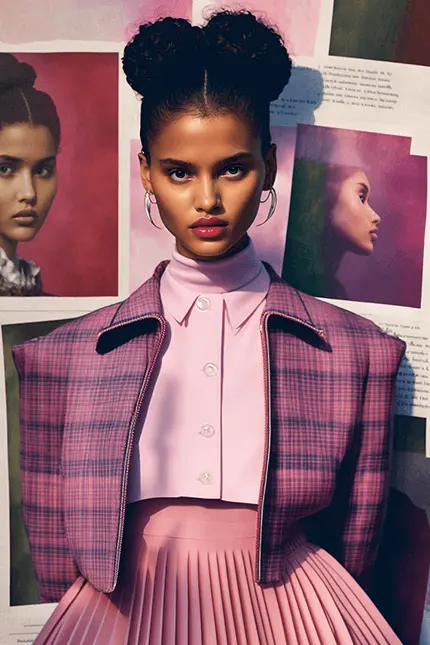
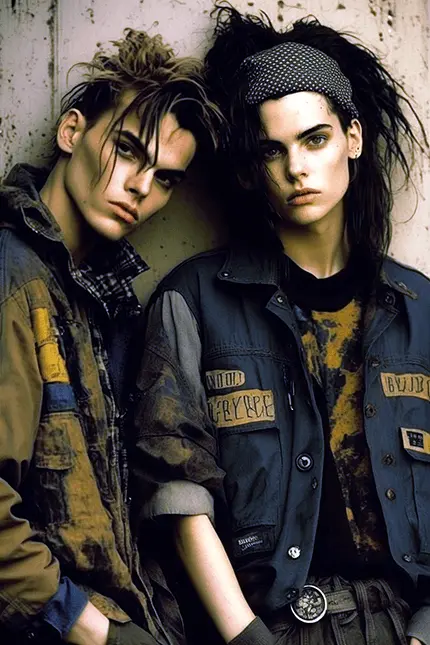
The 90s was a decade that saw a lot of diverse fashion trends, with influences ranging from streetwear to high-end couture.


During the early 90s, fashion was still influenced by the bold, over-the-top looks of the 80s, including crop tops, leopard-print fabrics, and pleather.
Mock neck tops were also popular during the 80s and early 90s, as they offered a more sophisticated alternative to traditional crew neck tops.
A crop top made from leopard-print pleather with a structured design, long sleeves, and a mock neck would have combined several popular elements of 90s fashion, making it a bold and eye-catching statement piece.
Power Dressing
This style was characterized by sharp, structured clothing, often in dark, solid colors, and featuring strong, exaggerated shoulder pads that created a powerful, broad-shouldered silhouette.

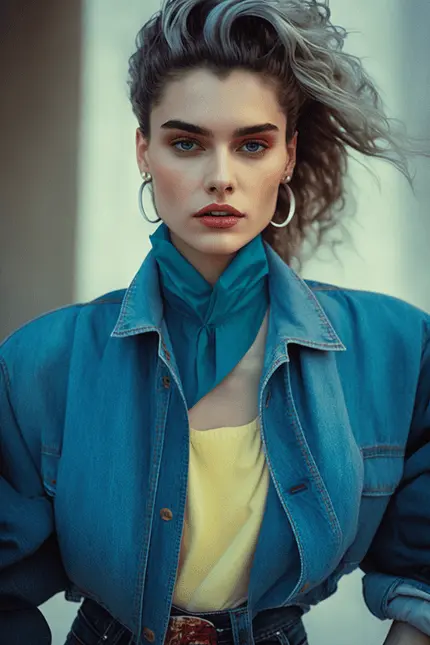
90s MTV House of Style
Grunge fashion has its roots in Seattle Washington and became popular in the early 1990s as the grunge music scene exploded in popularity, with bands like Nirvana, Pearl Jam, and Soundgarden.
Grunge fashion is characterized by its DIY, stripped-down aesthetic and is often described as a rebellious response to the over-the-top excess of 1980s fashion.
The history of Grunge fashion can be traced back to the punk and alternative music scenes of the late 1970s and early 1980s.
Grunge fashion took elements from punk and alternative fashion, such as leather jackets and band t-shirts, and added a new level of grunge-inspired sloppiness and anti-fashion sensibility.
This included oversized flannel shirts, torn jeans, and sneakers or combat boots.
The cultural significance of Grunge fashion lies in its embrace of a new, anti-fashion sensibility.
Grunge fashion was seen as a symbol of independence.
It also reflected the sense of disillusionment and anger that was felt by many young people in the early 1990s, who were struggling with the aftermath of the Reagan-Bush years and the recession that followed.
A response to the over-the-top consumerist excess, the music and fashion of the grunge movement rejected traditional fashion norms of the time, instead celebrating a more authentic, raw, aesthetic.
In terms of historical significance, Grunge fashion represents a significant shift in fashion and popular culture, as it marked the end of the dominant cultural narrative of the 1980s and the beginning of a new cultural movement that celebrated thrift stores and rejected consumerism.
To this day, the grunge aesthetic continues to influence fashion and popular culture, and its influence can be seen in everything from high-end couture collections to streetwear.
Some of the most notable female celebrities of the 90s who embodied the Grunge aesthetic include:
- Courtney Love – Lead singer of the band Hole and wife of Nirvana’s Kurt Cobain, Love was a pioneer of the grunge look and was often seen in oversized flannel shirts, ripped jeans, and leather jackets.
- Winona Ryder – Known for her roles in films like “Heathers,” “Beetlejuice,” and “Edward Scissorhands,” Ryder was a style icon of the 90s and often incorporated grunge elements into her red carpet looks, such as oversized sweaters and Doc Martens boots.
- Kate Moss – One of the most influential models of the 90s, Moss was often seen in a variety of grunge-inspired looks, including oversized flannel shirts and torn denim.
- Gwen Stefani – Lead singer of the band No Doubt, Stefani was known for her eclectic style and often incorporated grunge elements into her look, such as oversized flannel shirts and combat boots.
Hip Hop fashion in the 1990s emerged as part of the overall hip hop culture of the late 1970s and early 1980s [1].
90s hip hop outfits were heavily influenced by the athletic wear and streetwear of the time, as well as the emerging sportswear brands like Nike, Adidas, and Puma.
The cultural significance of 90s hip hop fashion lies in its role as a form of self-expression and identity within the hip hop community.
The clothing worn by hip hop artists and fans was a way of signaling their affiliation with the hip hop culture and representing their personal style and values.
Hip hop fashion was also a way of reclaiming and repurposing athletic and streetwear items, transforming them into symbols of hip hop style and creativity.
The history of 90s hip hop fashion can be traced back to the early days of hip hop music, when the clothing worn by artists and fans reflected the urban, street-based origins of the culture.
In the 1990s, hip hop fashion became more mainstream and widely adopted, as hip hop music and culture grew in popularity.
Key elements of 90s hip hop fashion included oversized athletic wear like tracksuits, athletic sneakers, and baseball caps, as well as more streetwear-inspired pieces like baggy jeans, graphic tees, and bomber jackets.
90s hip hop fashion represented a major turning point in the history of fashion and pop culture.
The widespread popularity of hip hop and hip hop fashion helped to break down the barriers between high fashion and streetwear, paving the way for the rise of streetwear as a major cultural force in its own right.
The influence of 90s hip hop fashion can still be seen in contemporary fashion, with many brands and designers drawing inspiration from the iconic looks of the era.
Early 90s Hammer Pants & Crop Tops
MC Hammer pants and crop tops became popular in the early 90s, during the peak of the New Jack Swing era and the rise of hip-hop music.
Hammer pants, which were named after MC Hammer, were loose-fitting pants that were worn high on the waist and featured a wide leg and plenty of room in the seat and thighs.
They were often made from shiny, metallic fabrics and were worn as a statement piece with coordinating tops.
Crop tops, on the other hand, were short tops that exposed the midriff and were often worn with high-waisted pants or skirts.
They were popular in a variety of styles, from simple cotton T-shirts to more elaborate tops with lace, ruffles, or embellishments.

Together, hammer pants and crop tops became a popular trend in the early 90s and were often worn by fans of hip-hop and R&B music.
They remained popular throughout the decade and into the early 2000s, although their popularity faded as the decade progressed and new trends emerged.
Streetwear fashion in the 1990s was a reflection of the growing cultural influence of hip hop and skate culture. Streetwear drew inspiration from the athletic wear and street-style of the time, and was characterized by oversized silhouettes, bold graphics, and bright colors.
Streetwear first became popular in the 80s in New York City, where hip hop and skate culture were thriving. As hip hop culture spread to other cities, the popularity of streetwear grew, and by the 90s, it had become a global phenomenon.
One of the main reasons streetwear became popular in the 90s was due to the growing influence of hip hop culture. Hip hop artists and celebrities began incorporating streetwear into their everyday style, and this helped to popularize the look and make it more mainstream.
Streetwear also gained popularity in the 90s because it offered a more relaxed and comfortable alternative to traditional fashion. It was seen as a way to express individuality and rebellion, and it was embraced by those who wanted to break free from the constraints of traditional fashion.
Streetwear fashion had a significant impact on popular culture and the fashion industry. It challenged traditional ideas about beauty and femininity, and helped to redefine what was considered fashionable. The streetwear aesthetic also influenced other aspects of popular culture, such as music, art, and film.
Streetwear fashion’s emphasis on oversized silhouettes, bold graphics, and bright colors helped to shape the fashion landscape, and challenged traditional ideas about beauty and femininity. The lasting impact of streetwear on popular culture and the fashion industry is a testament to its significance and influence.

Preppy fashion aesthetic, led by the likes of Ralph Lauren and Chanel was influential in shaping the overall fashion trends of the mid-90s, and many of its elements, such as plaid skirts and knee-high socks, remained popular well into the late 90s.
Clueless
The “Clueless” preppy fashion aesthetic became popular in the mid-90s, particularly after the release of the movie “Clueless” in 1995.
The film, which was set in Beverly Hills and followed the adventures of a popular high school student named Cher Horowitz, was known for its bright and playful fashion sense, which blended preppy and eclectic styles.
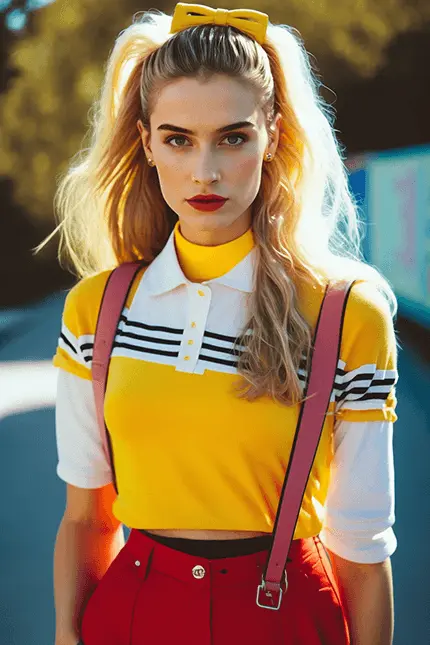
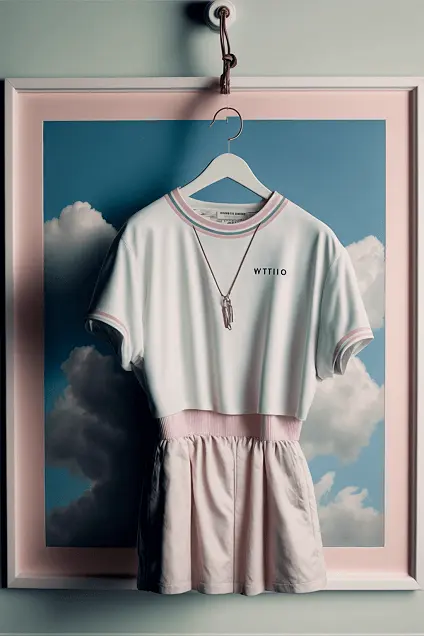
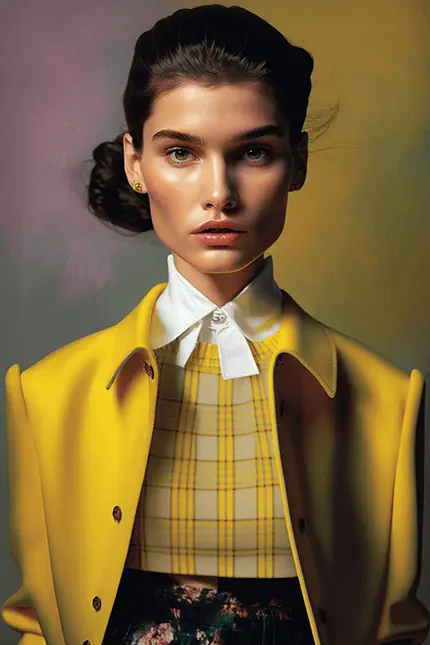
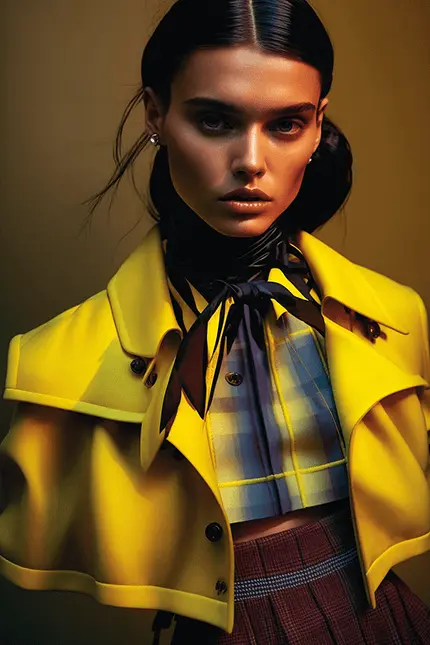

The “Clueless” style was characterized by plaid mini-skirts, knee-high socks, oversized sweaters, and Mary Jane shoes. It also included chunky statement jewelry, oversized sunglasses, and brightly colored hair accessories. The overall look was playful, fun, and youthful, and it quickly became a popular trend among teenage girls and young women.
Y2K fashion, also known as the “millennium fashion,” was a popular style trend from around 1997 through 2004. Named after the Year 2000 Problem, Y2K aesthetic was characterized by its futuristic, cyber-inspired elements and the use of shiny, metallic materials, colorful patterns, and bold, eclectic combinations of styles and textures.


Sportswear fashion in the 1990s was heavily influenced by the rise of athletic and casual styles, as well as the popularity of athletic and sport-inspired clothing. This included pieces like tracksuits, basketball shorts, and sneakers, which were worn not only for athletic activities, but also as everyday streetwear.
The sportswear trend in the 90s was popularized by hip hop and urban youth culture, who embraced the athletic and casual style as a way to express their individuality. This led to the creation of new sportswear brands, such as FUBU, Cross Colours, and Tommy Hilfiger, which produced clothing that incorporated sportswear elements with urban and streetwear influences.
Sportswear fashion in the 90s was also influenced by high-end fashion, as designers began to incorporate sportswear elements into their collections. This led to the creation of “athleisure,” which combined athletic and casual styles with high-end fashion, creating a new trend that blended comfort and style.
The sportswear trend in the 90s had a significant impact on the fashion industry, as it influenced the way people dressed and the types of clothing that were produced. It also helped to popularize sneakers and athletic footwear, which became a staple of the sportswear look, and continue to be popular today.
Sportswear fashion in the 90s was heavily influenced by the rise of athletic and casual styles, as well as the popularity of hip hop and urban youth culture. It led to the creation of new sportswear brands and influenced high-end fashion, resulting in the creation of the athleisure trend. The sportswear trend in the 90s had a significant impact on the fashion industry and continues to be popular today.
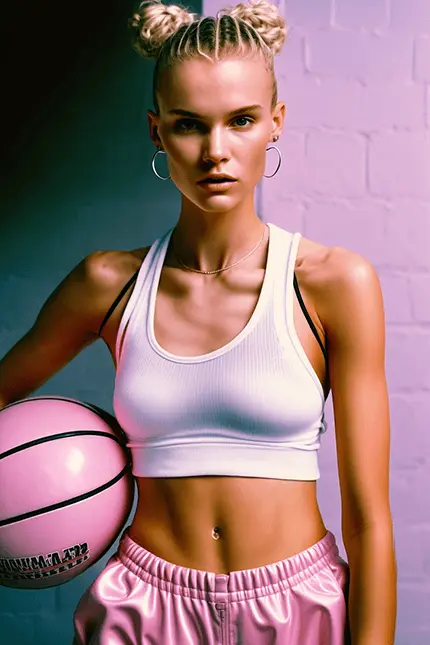
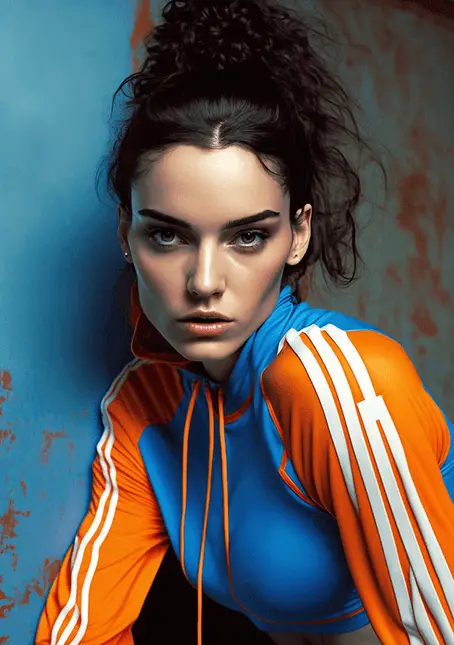
Minimalist fashion in the 1990s was characterized by clean lines, monochromatic color palettes, and a focus on functionality. This style emerged as a response to the more ornate and eclectic styles of the 1980s, and was heavily influenced by the rise of minimalist design in architecture and art.
Minimalist fashion became popular in the 90s for several reasons. One reason was the changing cultural and economic climate of the time. As the world was becoming more interconnected, people were looking for ways to simplify their lives and reduce clutter. Minimalist fashion reflected this trend by offering a more streamlined, understated look.
Another reason for the popularity of minimalist fashion in the 90s was the rise of the “heroin chic” aesthetic, which emphasized a gaunt, androgynous look that was often associated with the minimalist style. This look was popularized by high-fashion designers such as Calvin Klein and Helmut Lang, and was often seen as a reaction to the excess of the 80s.
Minimalist fashion also had a significant impact on popular culture and the fashion industry. It challenged traditional ideas about beauty and femininity, and helped to redefine what was considered fashionable.
Chokers: Chokers were a popular accessory in the 90s and were often made from velvet or plastic. They were a staple of the grunge and alternative fashion scenes and were often worn with oversized T-shirts and combat boots.
Backpacks: Backpacks were a popular accessory in the 90s, particularly among students and young people. They were often made from durable, lightweight materials and came in a variety of colors and patterns.
Sunglasses: Sunglasses were a popular accessory in the 90s and were often worn with casual, sporty outfits. Popular styles included Aviator, Wayfarer, and wraparound sunglasses.
Baseball Caps: Baseball caps were a popular accessory in the 90s, particularly among men. They were often worn with casual, sporty outfits and came in a variety of colors and logos.
Scrunchies: Scrunchies were a popular hair accessory in the 90s and were often made from colorful or patterned fabric. They were often used to secure ponytails or buns.
Bling & Chains: Bling, which refers to flashy and ostentatious jewelry, was a popular trend in the 90s, particularly in the hip-hop and R&B scenes. Chains, often made from gold or silver, were a popular form of bling and were often worn as necklaces, bracelets, or anklets.
Chain Wallets: Chain wallets were also a popular accessory in the 90s. These wallets were often made from leather or fabric and had a metal chain attached, which allowed them to be worn around the waist. Chain wallets were often seen as a symbol of hip-hop and street culture.

90s outfits were an eclectic blend of different aesthetics.
Here are some of the most popular fashion styles of the 90s:
Grunge: This was a big trend in the early 90s, inspired by the alternative rock music scene. Grunge style was characterized by plaid shirts, ripped jeans, combat boots, and oversized knitwear.
Sportswear: The 90s was also a big decade for sportswear and athleisure, with brands like Nike, Adidas, and Reebok becoming popular. Tracksuits, sneakers, and sports jerseys were all staples of the sportswear look.
Hip Hop: Hip hop culture had a huge impact on 90s fashion, and brands like FUBU, Cross Colours, and Karl Kani became popular for their oversized, street-inspired clothing.
Designer Label Mania: Designer labels also became more accessible to the masses in the 90s, with Tommy Hilfiger, Calvin Klein, and Ralph Lauren becoming household names. Logos were everywhere, from clothing to accessories.
Minimalism: The latter half of the 90s saw a resurgence of minimalist, clean-lined fashion, with designers like Helmut Lang, Jil Sander, and Prada leading the way.
The 1990s was a decade of eclectic fashion trends, and there were several types of pants that were popular during this time. Here are a few examples:
- Baggy Jeans: Baggy jeans were a staple of 90s streetwear and were often worn with oversized T-shirts, athletic shoes, and baseball caps.
- High-Waisted Jeans: High-waisted jeans were a popular style for both men and women in the 90s, and were often worn with crop tops or tucked-in T-shirts.
- Flared Jeans: Flared jeans were popular in the late 90s and often had a wide, bell-bottom style. They were often paired with chunky platform shoes or boots.
- Ripped Jeans: Ripped jeans were a trendy choice in the 1990s, particularly among subcultures such as grunge and punk. Distressed denim was a common material used, and the jeans often featured holes or tears in various places, giving them a rugged, rebellious look.
- Joggers: Joggers, also known as sweatpants, were popular in the 90s for their comfortable and casual style. They were often paired with oversized T-shirts and athletic shoes.
- Cargo Pants: Cargo pants were popular in the 90s for their utilitarian style and were often worn by people who wanted a more relaxed, outdoor look. They were often made from lightweight, durable fabric and featured multiple pockets.
- Corduroy Pants: Corduroy pants were a popular choice in the 90s for their texture and durability. They were often worn in earthy colors, like brown or olive green, and were often paired with flannel shirts or turtlenecks.
- Harem Pants: Harem pants, also known as “genie pants,” were a popular style in the 90s and were often made from lightweight, flowy fabric. They were often worn with crop tops or oversized T-shirts.
- Bike Shorts: Bike shorts were a popular trend in the late 90s and were often worn with oversized T-shirts, athletic shoes, and denim jackets.
- Parachute Pants: Parachute pants, also known as “hammer pants,” were a popular style in the 90s and were often made from lightweight, shiny fabric. They were often worn with oversized T-shirts, athletic shoes, and baseball caps.
- Leggings: Leggings were a popular style in the 90s and were often worn with oversized T-shirts, tunic tops, or mini skirts. They were often made from stretchy, form-fitting fabric and came in a variety of colors and patterns.
- Capris: Capris, which are pants that cut off just above the ankle, were also a popular style in the 1990s. They were often crafted from lightweight, breathable fabrics, making them a popular pick for warm weather. Capris were often paired with sandals or espadrilles and were a staple of relaxed, summery fashion.

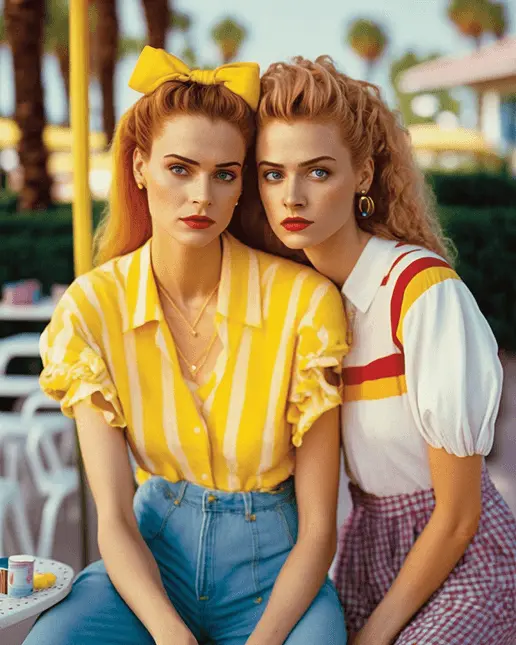
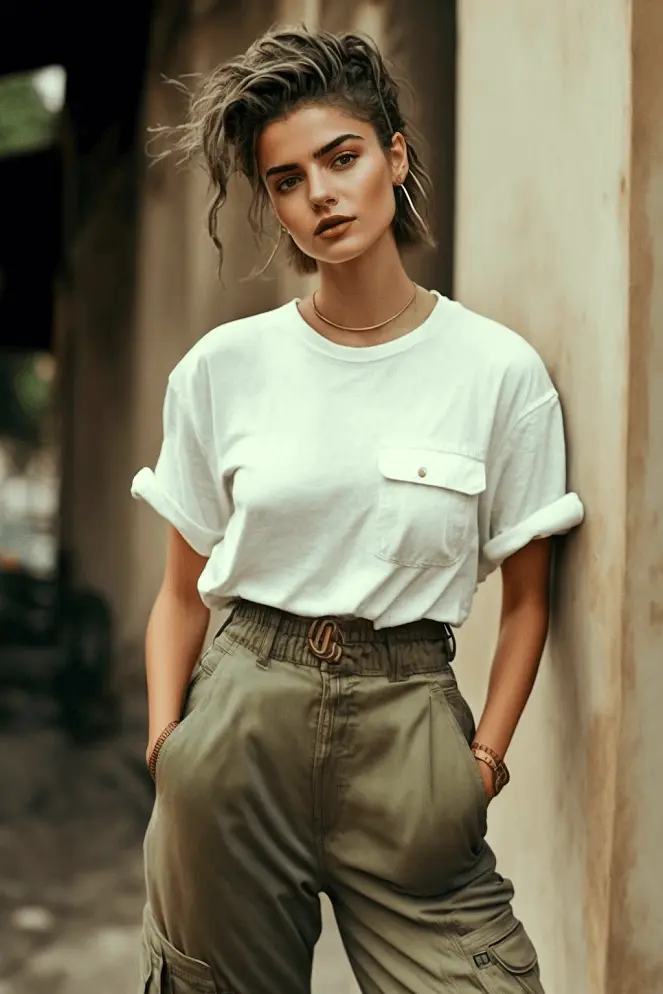
The 90s was a significant decade in the fashion world, marked by new trends, styles, and cultural movements that shaped the fashion landscape for years to come.
Experimentation, innovation, change, and upheaval marked by the emergence of new materials, silhouettes, and cultural influences in the 90s led to great creativity and self-expression in fashion, helping to set the stage for many of the trends and styles we love today.
The 90s saw the rise of trends like minimalism and sportswear, as well as the integration of streetwear and hip hop into high fashion.
An emergence of supermodels and the increased influence of music and celebrity on fashion during this decade. It was a time of great creativity and individuality in fashion, with designers, models, and other fashion industry professionals experimenting with new styles and pushing the boundaries of traditional fashion norms.
Designer Marc Jacobs, was instrumental in shaping many of the fashion trends of the 90s.
the rise of music, youth culture, and celebrity influence.
The significance of 90s fashion in current times can be seen in several ways:
Nostalgia: The 90s has become a source of nostalgia for many people, and fashion has not been immune to this trend. Many people are drawn to the bold and playful styles of the 90s, and this has led to a resurgence of 90s-inspired fashion trends in recent years. From choker necklaces to oversized denim jackets, many elements of 90s fashion are once again popular and sought after.
Influence on Current Trends: The fashion trends of the 90s have had a lasting impact on current fashion, and many of the styles and silhouettes from this decade can be seen in contemporary fashion. For example, the popularity of slip dresses, high-waisted pants, and crop tops can be traced back to the 90s, and these styles continue to be popular today.
Legacy of Key Figures: Many of the key figures in 90s fashion, such as designers Marc Jacobs, Alexander McQueen, and John Galliano, continue to have a significant impact on the fashion world today. These designers helped to shape the fashion trends of the 90s and have since gone on to become legends in the fashion industry, influencing current designers and setting new standards for fashion innovation.
Cultural Significance: The 90s was a time of great cultural change, and this is reflected in the fashion trends of the time. From the rise of hip hop and streetwear to the influence of punk and grunge, the fashion of the 90s was heavily influenced by cultural movements and continues to be an important part of fashion history.
The 1990s were a significant decade in fashion history for several reasons:
The Rise of Streetwear: Streetwear fashion, which originated from the streets of California and New York, became mainstream in the 1990s. Brands like Tommy Hilfiger, Nautica, and Ralph Lauren popularized preppy streetwear, while Nike and Adidas dominated the sportswear market.
Grunge Fashion: Grunge fashion, characterized by plaid shirts, torn denim, and Doc Martens, became popular in the early 1990s, especially among young people who were rejecting the glamorous and materialistic culture of the 1980s. Bands like Nirvana and Pearl Jam helped popularize the grunge look.
The Supermodel Era: The 1990s was the era of the supermodels. Models like Cindy Crawford, Naomi Campbell, and Linda Evangelista dominated the fashion industry and became international celebrities in their own right.
The Rise of Minimalism: Minimalist fashion, characterized by clean lines, neutral colors, and simple shapes, became popular in the 1990s, in contrast to the flashy and over-the-top fashions of the 1980s. Brands like Calvin Klein and Helmut Lang helped popularize minimalist fashion.
Overall, the significance of 90s fashion in current times lies in its continued influence on current fashion trends, the legacy of key figures from this decade, and its cultural significance as a reflection of the attitudes and movements of a pivotal moment in history.
Here are a few female musicians from the 1990s whose style you might find inspiring:
Alanis Morissette: Alanis is known for her bold, alternative rock sound and eclectic sense of style. She often wore ripped denim, oversized t-shirts, and bold jewelry.
Gwen Stefani: As the lead singer of No Doubt, Gwen’s style was a mix of punk, ska, and pop. She was known for wearing oversized sunglasses, bright red lipstick, and unique, eclectic clothing.
Courtney Love: Courtney was the lead singer of the band Hole and was known for her grunge style, which often included oversized clothing, grungy makeup, and babydoll dresses.
Missy Elliott: Missy was one of the most influential female rappers of the 90s and was known for her bold, over-the-top fashion sense. She often wore statement jewelry, bright colors, and oversized clothing.
Lauryn Hill: Lauryn was a member of the Fugees and went on to have a successful solo career. She was known for her eclectic style, which often included traditional African garb, oversized clothing, and statement jewelry.
The 1990s was a great decade for female pop stars, with many artists breaking into the mainstream and achieving great success.
Here are a few of the most famous female pop stars from the 1990s:
Mariah Carey: Mariah Carey was one of the biggest pop stars of the 90s and is still considered one of the greatest vocalists of all time. She was known for her powerful voice and glamorous style.
Madonna: Madonna was already a pop icon in the 80s, but she continued to dominate the charts and remain relevant throughout the 90s. She was known for her bold, boundary-pushing style and often incorporated elements of punk, hip-hop, and R&B into her music.
Whitney Houston: Whitney Houston was one of the biggest pop stars of the 90s and was known for her powerful voice and classic ballads. She was also a style icon, known for her glamorous red carpet looks and sophisticated style.
Janet Jackson: Janet Jackson was one of the biggest pop stars of the 90s and was known for her soulful voice, funky dance beats, and bold, eclectic style.
Celine Dion: Celine Dion was already a successful pop star in the 90s, but she rose to even greater heights with the release of the Titanic soundtrack, which included her hit song “My Heart Will Go On.”
Shania Twain: Shania Twain was one of the biggest country pop stars of the 90s and was known for her crossover hits and upbeat, catchy songs. She was also known for her glamorous style and often incorporated elements of rock and pop into her music.
Britney Spears: Britney Spears rose to fame as a teenager in the late 90s and became one of the biggest pop stars of her generation. She was known for her dance-pop hits and sexy, playful style.
Christina Aguilera: Christina Aguilera rose to fame as a teenage pop star in the late 90s and was known for her powerful voice and upbeat pop hits. She was also known for her eclectic style, which often incorporated elements of R&B, hip-hop, and rock.
Sheryl Crow: Sheryl Crow was a successful singer-songwriter in the 90s and was known for her blend of rock, pop, and country. She was also known for her laid-back, bohemian style and often incorporated elements of folk and blues into her music.
Sarah McLachlan: Sarah McLachlan was a successful singer-songwriter in the 90s and was known for her ethereal, introspective songs and folky, acoustic sound. She was also known for her understated, bohemian style.
Toni Braxton: Toni Braxton was one of the biggest R&B stars of the 90s and was known for her soulful voice and smooth, sophisticated sound. She was also known for her glamorous, classic style.
Jewel: Jewel was a successful singer-songwriter in the 90s and was known for her introspective, folk-influenced songs and stripped-down acoustic sound. She was also known for her bohemian, natural style.
The 1990s was a great decade for girl groups, with many popular acts breaking into the mainstream. Here are a few of the most popular girl groups from the 90s:
Spice Girls: The Spice Girls were one of the most successful girl groups of all time, and each member had a distinct, iconic fashion style. From Ginger’s Union Jack dress to Baby’s pigtails and platform sneakers, their style was fun, playful, and bold.
TLC: TLC was a popular R&B girl group known for their hip-hop and funk-influenced sound. They were known for their eclectic style, which often included oversized clothing, statement jewelry, and colorful sunglasses.
Destiny’s Child: Destiny’s Child was one of the most successful girl groups of the 90s and early 2000s. Their style was a mix of R&B, hip-hop, and pop, and they were known for their glamorous, coordinated outfits.
All Saints: All Saints were a British girl group known for their pop and R&B sound. They were known for their streetwear style, which often included oversized clothing, chunky sneakers, and statement jewelry.
The Supremes: Although they rose to fame in the 1960s, The Supremes remained popular in the 90s and are considered one of the most successful girl groups of all time. They were known for their glamorous, coordinated outfits and beehive hairstyles.
Kim, Y. (2010). A Study of Hip-hop Fashion Trends-Focusing on the Trends Since 2000. Journal of the Korean Society of Costume, 60(2), 1-19.

